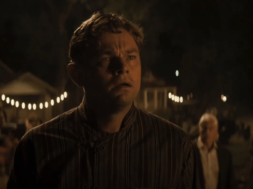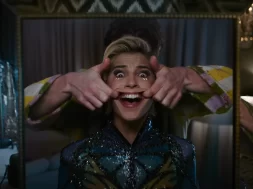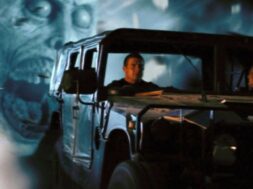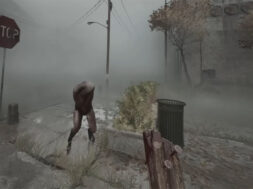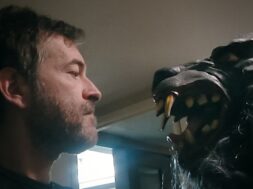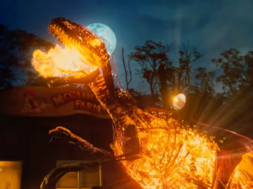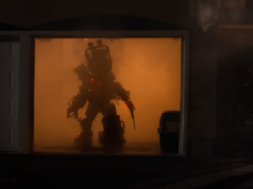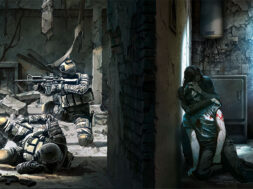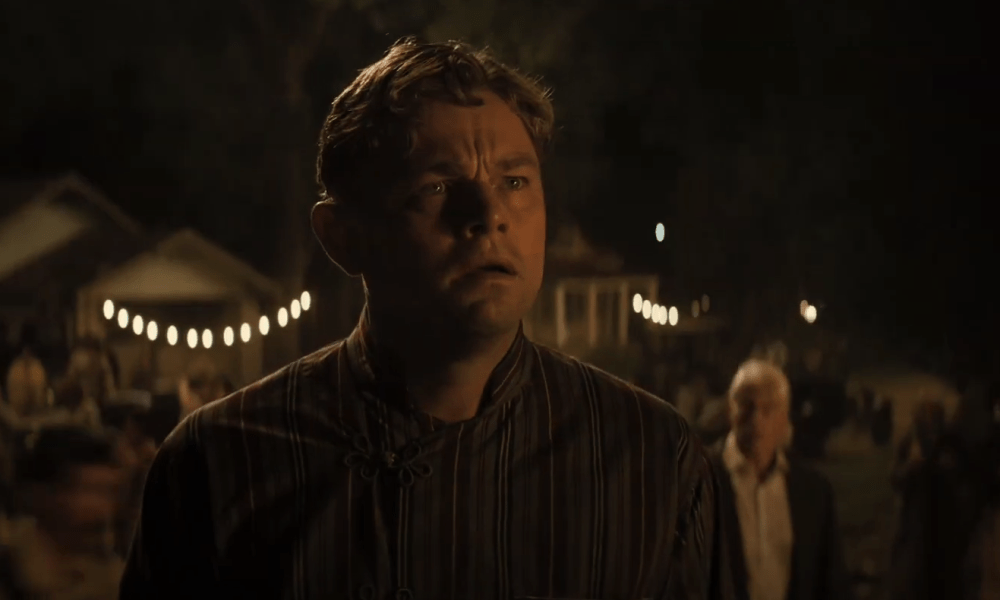
‘Killers of the Flower Moon’ First Trailer – Martin Scorsese Explores One of the Most Monstrous Crimes in American History
Based on its setup, The New Daughter would appear to be a ghost story. A troubled novelist moves his two children into a large and isolated house in rural South Carolina, and immediately they start to experience things that cannot be so readily explained. The audience might soon expect to see spirits of the dead haunting the film’s family, yet the fact is, something else entirely lurks on this cursed property.
Kevin Costner was coming off positive reviews for his villainous role in the psychological thriller Mr. Brooks when he was cast as the father in The New Daughter. Also joining the first directorial feature from REC screenwriter Luis Berdejo was Pan’s Labyrinth star Ivana Baquero. The talent behind this adaptation of author John Connolly’s short story piqued an interest at the time, but upon its release in 2009, critics largely panned the film, singling out the pacing, the lack of originality and the low scares. Somewhat valid as these criticisms may be, this overlooked tale of domestic dread still has its good points as well as a surprising amount of darkness.
Berdejo and screenwriter John Travis considerably reworked the source material for their film, but the bones of Connolly’s story are intact. Now taking place in and around a Deep Southern house — the real-life Wedge Plantation is located near McClellanville, South Carolina — rather than inside an old Irish rectory, The New Daughter has a similar yet different atmosphere. Because of the house’s history, there is a lingering sense of pain in these walls that is only exacerbated by the Jameses’ presence. John (Costner) has recently survived a bad divorce; his ex-wife left him for someone else. The film’s basis adds: the mother saw her children as “a burden that she wished to relinquish.” Between the two of them, Louisa (Baquero) openly wears her emotional scars, whereas younger brother Sam (Gattlin Griffith) puts on a brave face despite his complete awareness.
While American Gothic and haunted-house films were a lot less common to see in the 2000s, An American Haunting, the Amityville Horror remake, The Messengers and The Haunting in Connecticut showed there was still interest in the subgenre. Of course anyone watching The New Daughter will quickly learn how it trades ghosts for something more tangible, despite its vague marketing and ambiguity about what exactly is the story’s “ancient evil.” The film’s unique antagonist is hinted at as early as the opening; the beginning shows what looks to be scenic shots of Mother Nature and her children. A prolonged clip of an active ant bed also alludes to something sinister. Mysterious, muddy footprints on the Jameses’ staircase as well as, and most importantly, grotesque shadows crawling around the house’s exterior all point to this film being a creature-feature, not a haunter.
Moving from Ireland to South Carolina required an adjustment of the story’s mythology. What were once Irish fairy folk or changelings in the original short were now “mound-walkers,” the ghastly inhabitants of what was said to be Native American burial mounds on the Jameses’ property. In either version, the characters are dealing with preternatural mound dwellers. Subterranean fae, trows and their akin entities hail from Irish and Scottish folklore, so the film created its own local analog. Archaeological earthworks, including mound-building, date far back in North American history, but The New Daughter fabricates an alternate history for these curious structures.
On top of Louisa’s growing anger with the divorce and school is a festering plot about adolescence. The daughter’s frustration leads her to explore the new property, and in turn, climb the foreboding mound. This then sets off a kind of maturation that can only be described as monstrous. The transformation is not immediate or overt, but it is enough for Louisa’s father to take notice directly or otherwise. Berdejo limited the use of the color red early on in the film just so he could save it for the exact moment that reality and fantasy come together; John injures his finger at the same time that Louisa is attacked by the mound-walkers. To reinforce the metaphor for Louisa’s change, a creepy straw doll “gives birth” to a spider at one point.
The 2000s saw multiple films on the opposite ends of the horror spectrum; some were graphic, violent and transgressive, and others stayed on the safer side. Most notably there was a trend of PG-13 rated horror films in force, and this practice was primarily a bid to make more money. The New Daughter was indeed rated PG-13, however it is neither light nor safe. In place of the usual spectral possession is a horrifying instance of crossbreeding; the all-male mound-dwellers apparently swarm Louisa when she is lying outside near the house, thus turning her into their “queen.” While this sexual assault is only implied and never explicitly shown — other than the suggestive bite marks seen all over Louisa’s bare back — it is a disturbing moment upon realization. The first of several in this film.
John wants to keep his children close to him after his divorce, so naturally he is anxious when Louisa starts to show signs of growing up. Fearing what he originally believes is the first stage of adolescence, John goes to great lengths to stop the change. This includes tracking down the house’s previous residents, who went through a similar situation. John’s effort is in vain, though, because Louisa is too far gone.
In the film’s climax, John retrieves Louisa before detonating the mound. Once again, Berdejo cuts away prematurely to avoid confirmation and leave the audience hanging. Without concrete answers to comfort them, however, eternal optimists can only hope John saved his daughter first, then later his son. Of course others will speculate that John had to euthanize his daughter, who was probably well past the point of saving. Was the finale’s big explosion all part of an act of mercy — a bit on the nose considering that the town is called Mercy — or, in a more pitch-black interpretation, was John ensuring he and his daughter never grow apart, and she never leaves him much like his wife did? If Costner’s character did in fact go through with the hardest decision a parent can make, perhaps John also chose to perish with the child who already felt abandoned by one parent.
As if this whole ordeal was not gloomy enough, the film leaves the viewers questioning the status of Sam. The brother is presumably left to fend for himself as surviving mound-dwellers descend on the house and, from the looks of things in that last second, him. The framed family photo Sam clutches, in what might very well be his final moments, shows the reflection of someone (or something) approaching him from the fiery aftermath of the explosion. This open-ended conclusion was foreshadowed by an earlier exchange between father and son; when John marvels at how Sam unpacked his belongings and decorated his bedroom without any help, the boy proudly says, “All by myself.”
Audiences familiar with Berdejo’s past work would argue this was an example of a creative, up-and-coming filmmaker whose wings were clipped when handed a commercial project. On the contrary, his first film is not as sterile as initial reviews suggest. Wringing out attractive cinematography and solid performances, Berdejo manages to raise the value of his folk-horror/creature-feature, not to mention darken the implications and themes of the short story. In some ways this film might have fared better had it been released in this era of horror rather than back then. The director certainly relies on one too many clichés in the process, but once the training wheels are taken off, The New Daughter grows into a bleak example of how broken homes allow demons to come in through the cracks.
Horror contemplates in great detail how young people handle inordinate situations and all of life’s unexpected challenges. While the genre forces characters of every age to face their fears, it is especially interested in how youths might fare in life-or-death scenarios.
The column Young Blood is dedicated to horror stories for and about teenagers, as well as other young folks on the brink of terror.
